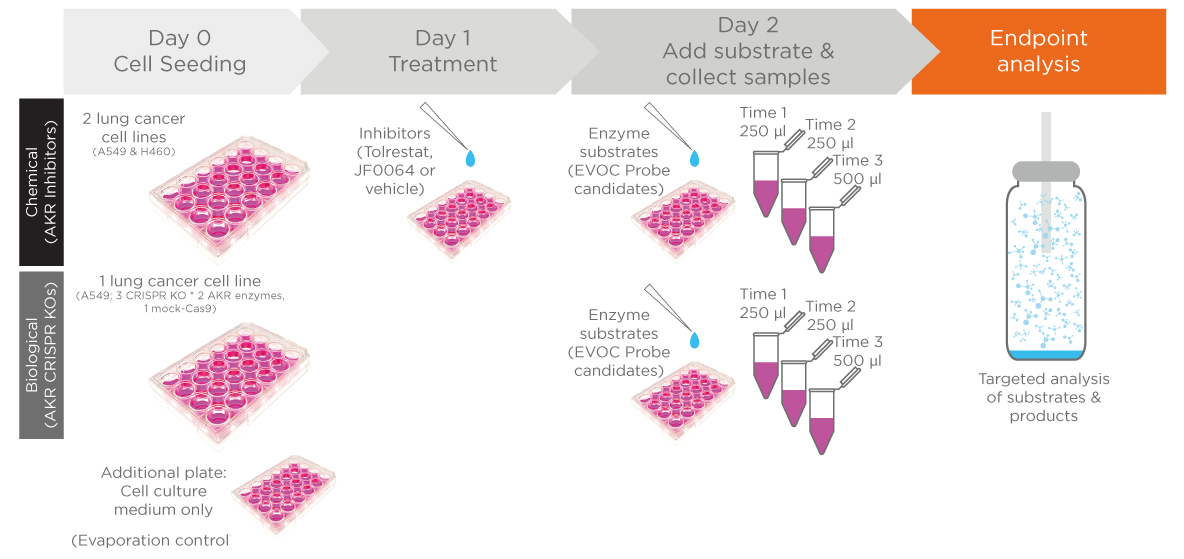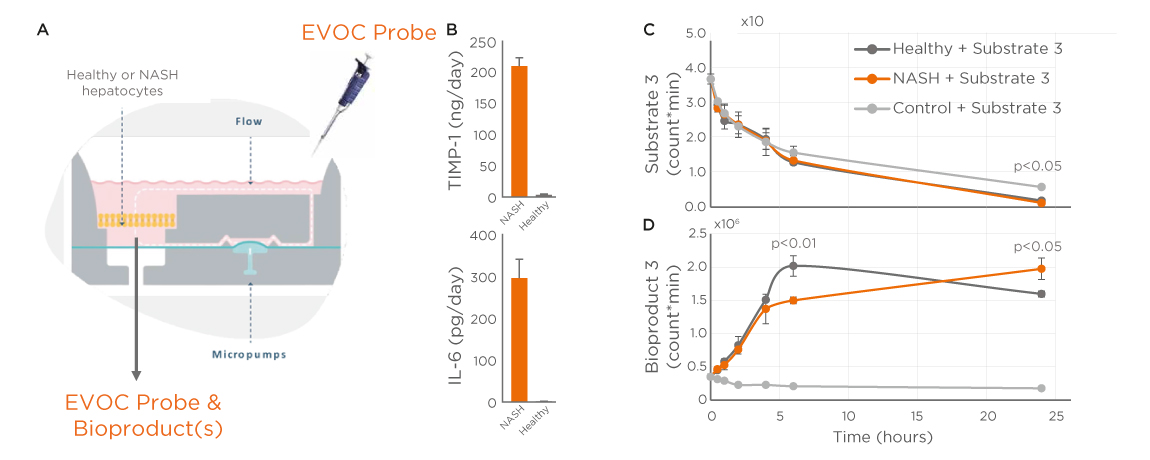In vitro analysis could help you identify prospective VOC biomarkers
Published on: 17 Oct 2022
Analyzing VOCs produced by in vitro models of disease or drug response can demonstrate mechanistic links between disease biology and biomarker candidates. These can subsequently be verified in clinical studies sampling the same VOCs on breath, providing vital evidence that could bring diagnostic breath tests into clinical practice.
The initial stages of drug development can use cultured cells to identify molecules that potentially have therapeutic effects. These cell systems can be easily manipulated to perform a plethora of assays that help and establish the potential of candidate drugs. Conducting these assays in vitro saves time and money. They would nearly always be more difficult and more expensive to perform in humans in the later stages of drug development.
A subset of the substances processed by cellular metabolism are volatile organic compounds (VOCs). In cell cultures these metabolite VOCs are released in the cellular headspace, and their alterations may reflect changes induced by drug treatment. Interestingly, these alterations could also, in vivo, be detected on the breath of patients, treated with the same drug, to obtain mechanisms insight about drug efficacy, and highlighting the strong translational potential of VOC analysis from pre-clinical to clinical phases.
Strategies for in vitro VOC analysis can be targeted, or untargeted. The untargeted approach involves measuring the whole spectrum of VOCs released in the headspace, in the presence, or the absence of a treatment of interest, and is ideal if the VOCs alterations induced by the intervention are unknown.
Targeted approaches measure specific known compounds, generated either by cellular metabolism, or by supplementing the culture media with substances metabolized by metabolic pathways of interest. The latter is defined as exogenous volatile organic compound (EVOC®) Probe approach.
In vitro analysis is boosting our in-house breath research
At Owlstone Medical, we have used the EVOC approach for several phenotypic characterizations in cell culture systems.
Aldo-keto reductases (AKRs) are upregulated in some cancers as an adaptation to oxidative stress and lipid peroxidation. We wanted to find out if an EVOC Probe could be created that would allow us to target AKRs in lung cancer cells and monitor the metabolic processes they are involved in on breath. To do that we modulated the catalytic activity of AKRs using small compounds (such as Tolrestat and JF0064) and we developed knock-out (KO) cells for target AKR genes (Figure 1).

We treated our cells with a range of EVOC substrates then monitored substrate and product levels using the same GC-MS workflow used for the detection of VOCs in clinical breath samples (OML Breath Biopsy® workflow). Using both approaches to modulate AKR activity in lung cancer cells, we could demonstrate that the target enzymes were responsible for the metabolization of our EVOC Probes and confirm the mechanism of action of the small compounds used (Figure 2).

This data suggested that in vitro cell cultures, coupled with VOC analysis can return information about genomic manipulations and drug treatments. The EVOCs used in these experiments could also be administered to humans and detected in breath, for a translation from pre-clinical to clinical studies. Results from this study were presented at 28th Congress of the European Association for Cancer Research (EACR 2022).
View the EACR poster and presentation
We have also used the EVOC approach to identify alterations of metabolic pathways induced by a chronic liver disease, at Owlstone Medical. We treated human primary hepatocytes with EVOCs and found alterations in their bioproduct generation in hepatocytes in which a non-alcoholic steatohepatitis (NASH) phenotype was induced (Figure 3). These EVOCs can be administered also to humans in vivo and used to identify the subjects affected by this disease.

Figure 3. Comparison of EVOCs metabolism between healthy and NASH hepatocytes.
Data and results from this study were presented at the International Association of Breath Research’s 2022 Breath Summit (IABR 2022).
Both of these studies have shown that VOC analysis at the pre-clinical level offers the possible advantage of identifying altered volatiles to be used as potential biomarkers in the clinical stages, to obtain mechanistic information about drug efficacy, and/or to evaluate metabolic alterations induced by diseases for non-invasive detection.
How can we help you?
We are the world-leader in Breath Biopsy for early detection and precision medicine. Our in vitro sampling pipeline supported by our Breath Biopsy Services can help you to identify volatile organic compounds (VOCs) produced by your laboratory samples that have the potential to be effective biomarkers for non-invasive clinical breath testing.
We can provide you with an optimized detection process supported by expert VOC analysis and identification that provides high confidence candidate biomarker discovery ideal for clinical translation.
Get in touch to discuss investigating VOC biomarkers for your disease of interest via in vitro analysis.